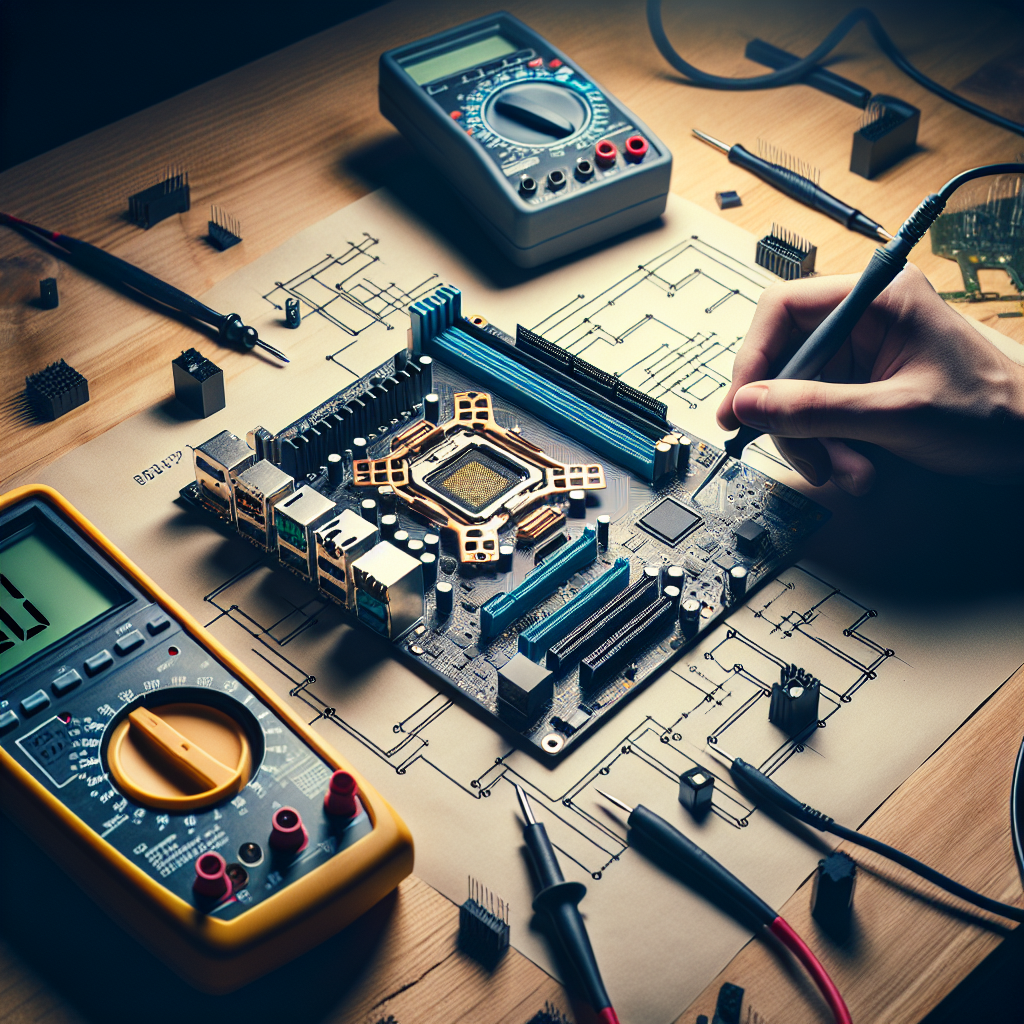How to Debug a Dead Motherboard?
The motherboard is the main circuit board that holds together all the essential components of a computer. When a motherboard fails, it can cause your entire computer system to stop functioning. Knowing how to debug and potentially fix a dead motherboard can save you both time and money. This guide will walk you through the steps necessary to diagnose and troubleshoot a dead motherboard.
Common Signs of a Dead Motherboard
Before diving into the debugging process, it's crucial to identify the symptoms of a dead or failing motherboard. Here are some of the most common indicators:
- No power to the system
- Unusual burning smell
- Random shutdowns or reboots
- Beep codes during startup
- No response from peripheral devices
Comparison of Common Symptoms and Possible Causes
| Symptom | Possible Cause |
|---|---|
| No power | Dead PSU, faulty power button |
| Burning smell | Electrical component failure |
| Random shutdowns | Overheating, power supply issues |
| Beep codes | Component failures (RAM, CPU) |
| No response | BIOS corruption, hardware issues |
Initial Troubleshooting Steps
Perform basic checks before delving into more complex diagnostics operations:
1. Check Power Supply
Ensure that the power supply unit (PSU) is functional and delivering the required voltage. You can test this with a multimeter. Additionally, verify that the power cord and the outlet are working correctly.
2. Inspect Physical Damage
Visually inspect the motherboard for any signs of physical damage, such as burn marks, swollen capacitors, or broken traces. If you find any visible damage, it’s a strong indication of motherboard failure.
3. Check Connections
Make sure all cables and components are securely connected. Loose connections can often lead to issues that mimic motherboard failures.
Advanced Diagnostic Techniques
If the initial checks did not resolve the issue, it's time to move on to more advanced diagnostic steps.
4. POST Test (Power-On Self Test)
POST is a diagnostic testing sequence run by the computer during boot-up. A successful POST indicates that the core components (CPU, RAM, and graphics card) are functioning correctly. Listen for any beep codes and refer to your motherboard manual to decode them.
5. Reseat Components
Sometimes, reseating components can resolve connectivity issues. Start by reseating the RAM, GPU, and any expansion cards. Make sure they're firmly and correctly placed in their slots.
6. Test with Minimal System Configuration
Attempt to boot your system using only the essential components: one stick of RAM, the CPU, and the motherboard. This minimal setup can help isolate defective components. If it boots successfully, gradually add back other components to identify the faulty part.
7. Check BIOS/UEFI Settings
A corrupted BIOS/UEFI can prevent the motherboard from booting. Reset the BIOS/UEFI settings to default by removing the CMOS battery for a minute or using the onboard jumper. Updating the BIOS/UEFI firmware is another method to resolve potential software-related issues.
When to Replace the Motherboard
There will be instances where despite all efforts, the motherboard remains unresponsive. Knowing when to replace it is crucial to avoiding further wasting time and resources:
- Persistent Power Issues: If you have verified the PSU is functioning but the motherboard still shows no signs of powering up, it is likely dead.
- Multiple Component Failures: Consistent failure of multiple components like GPU, RAM, and CPU when attached to the motherboard may indicate underlying issues with the motherboard itself.
- Extreme Physical Damage: Visible burn marks, melted components, or cracked PCB are definitive signs that replacement is necessary.
- Ineffective BIOS Updates: Failure to revive the motherboard using BIOS/UEFI reset or updates often points to a hardware issue that can’t be resolved through software.
Preventive Measures
Maintaining your motherboard can extend its life. Here are some preventive practices to consider:
- Regularly clean dust from the motherboard and other components.
- Ensure adequate cooling to prevent overheating.
- Avoid power surges by using surge protectors.
- Keep BIOS/UEFI updated to the latest version.
Debugging a dead motherboard might seem like a daunting task, but systematic troubleshooting can help you identify and potentially fix the problem. If all else fails, knowing when to replace the motherboard can save you further headaches down the line. Always remember, preventive maintenance plays a crucial role in extending the longevity of your motherboard and overall computer system.

